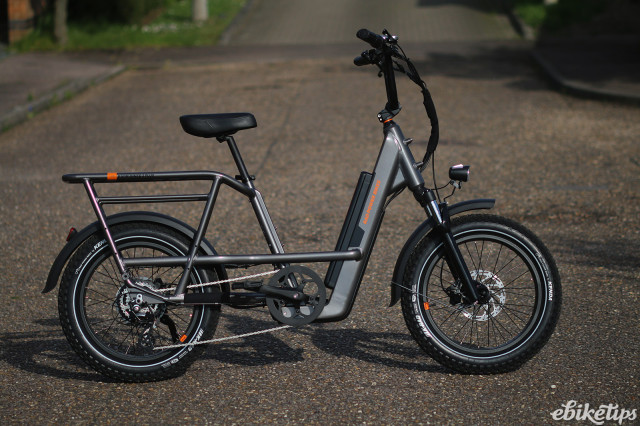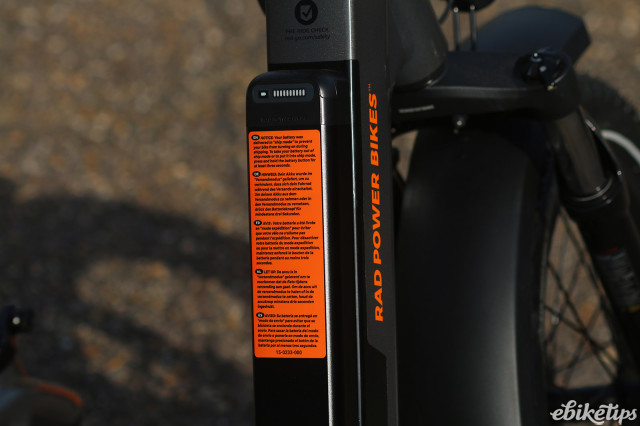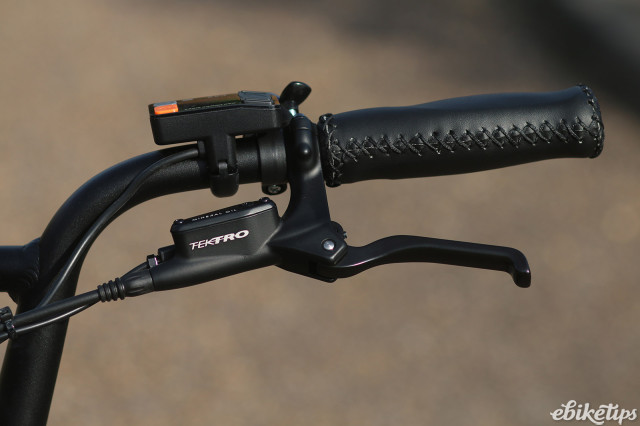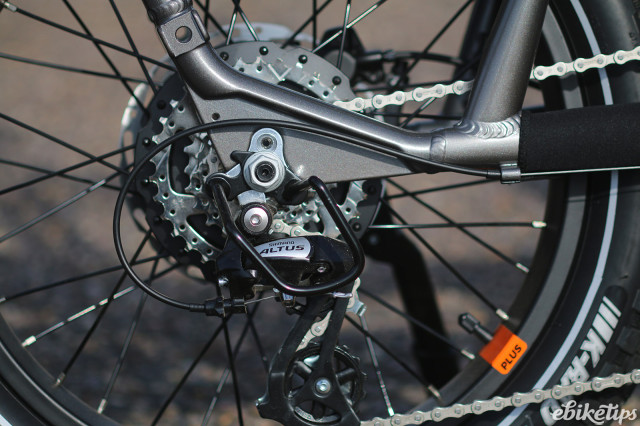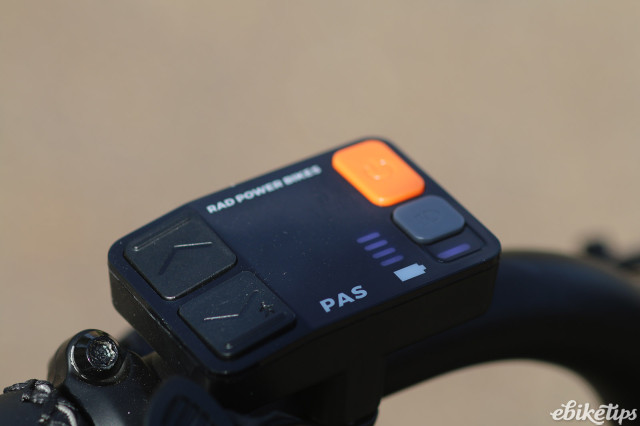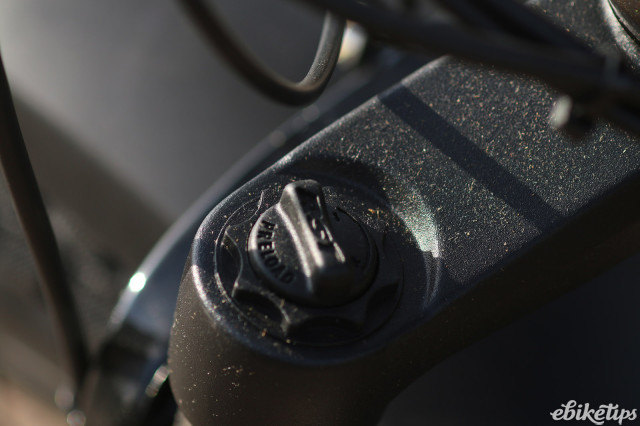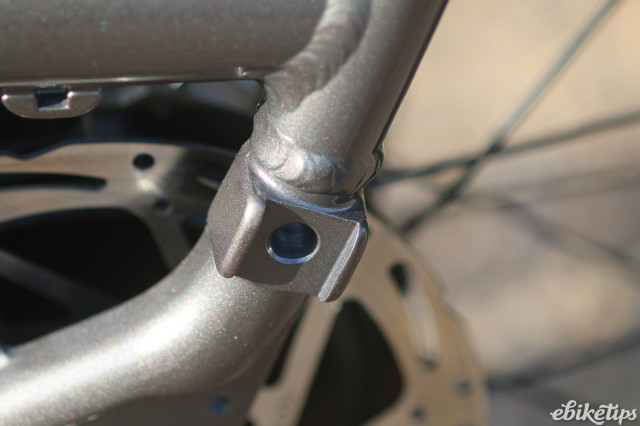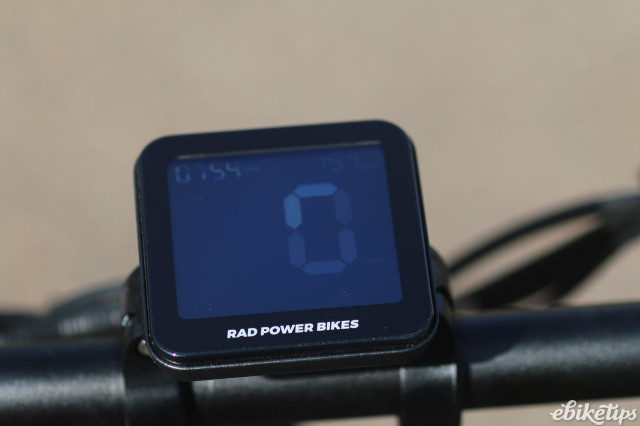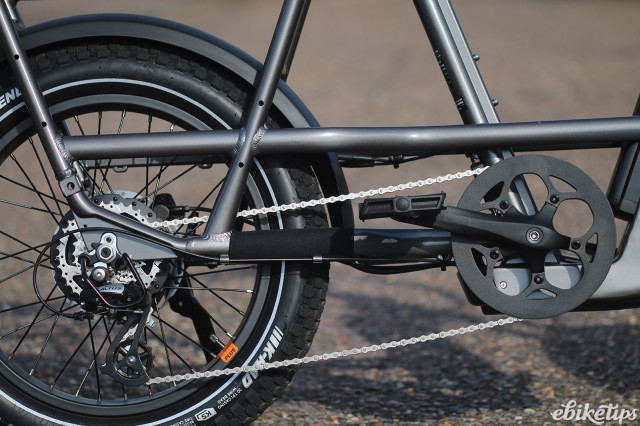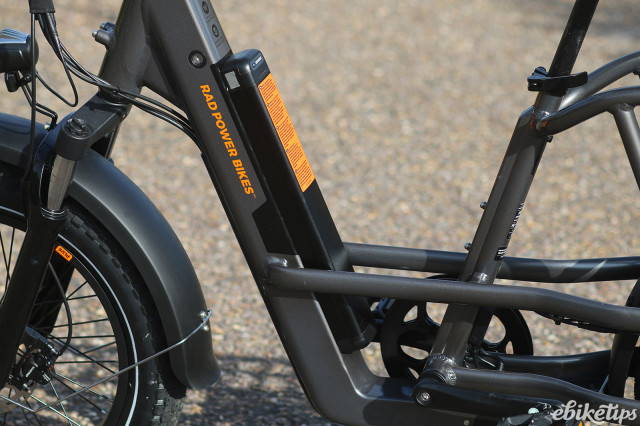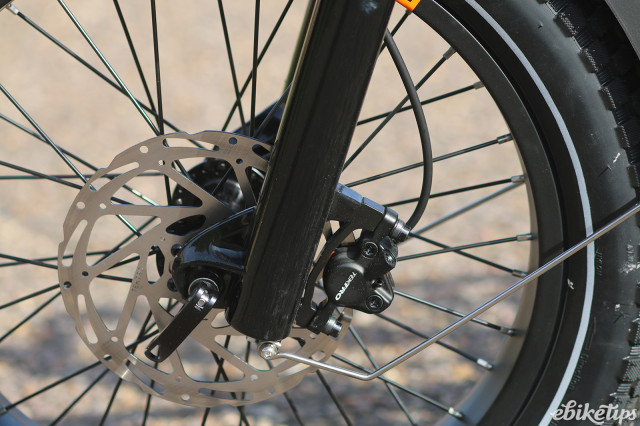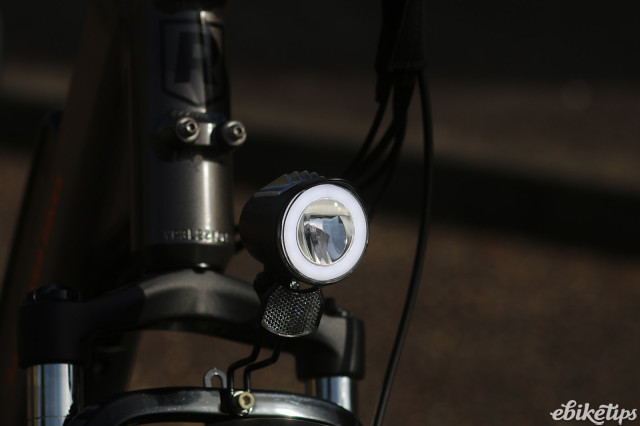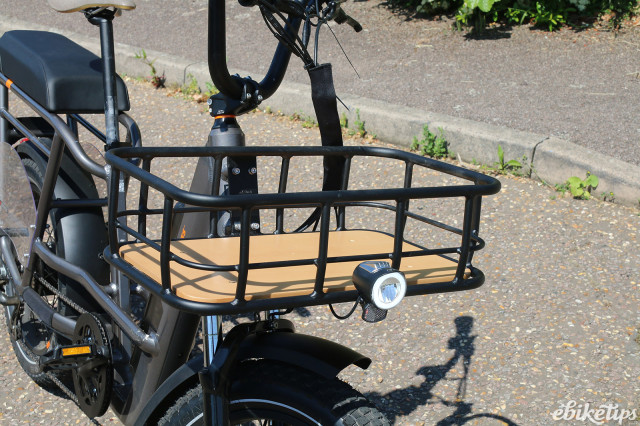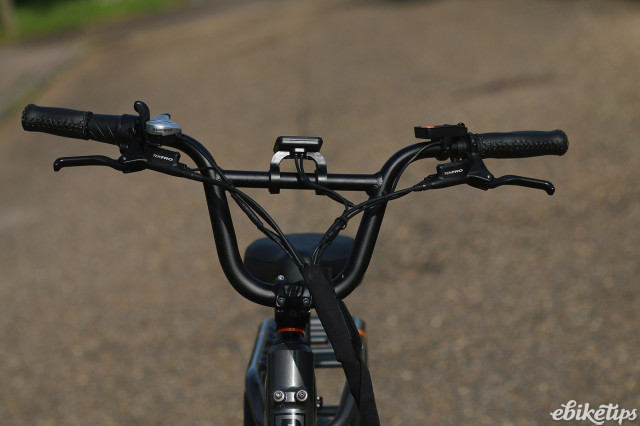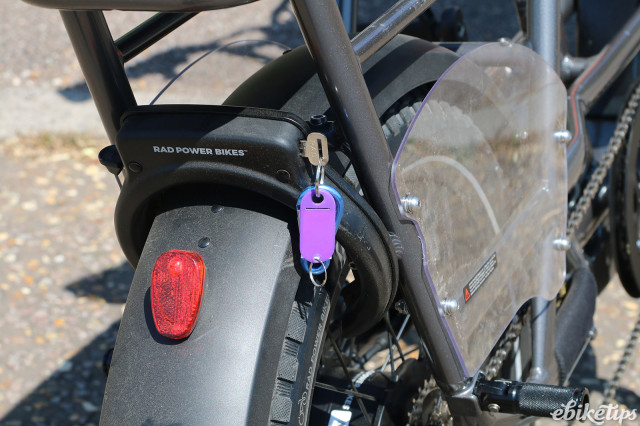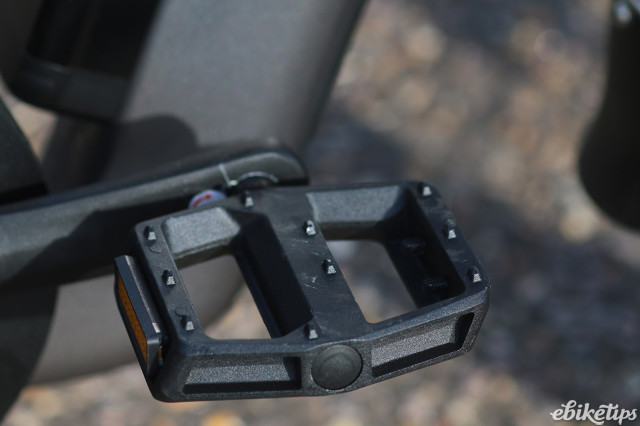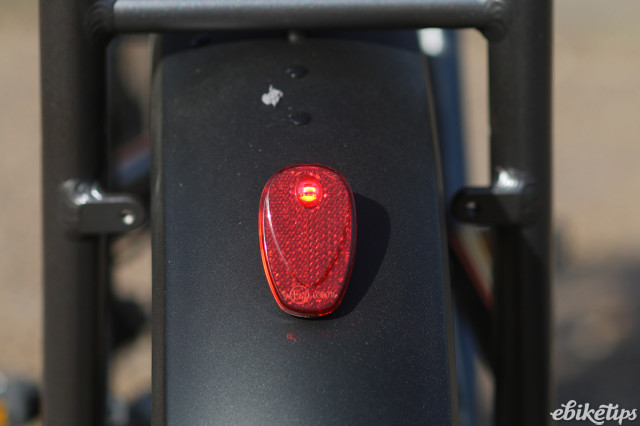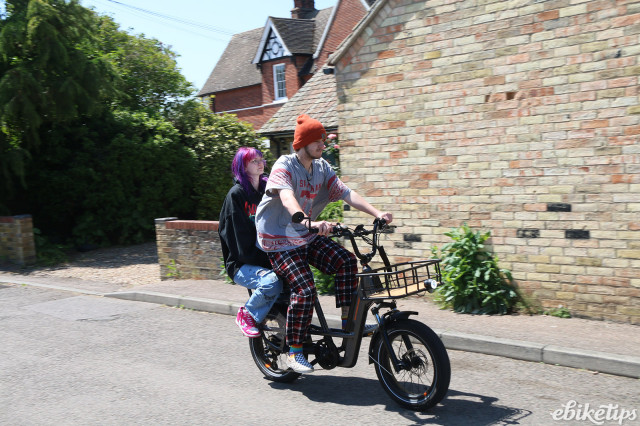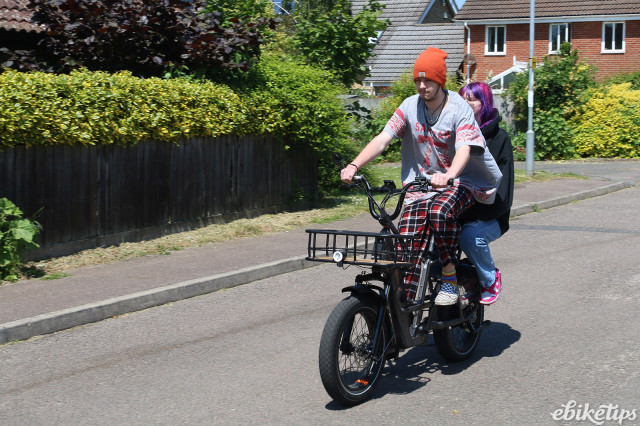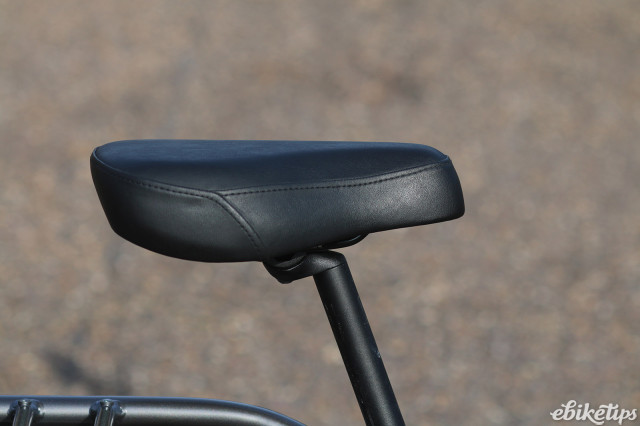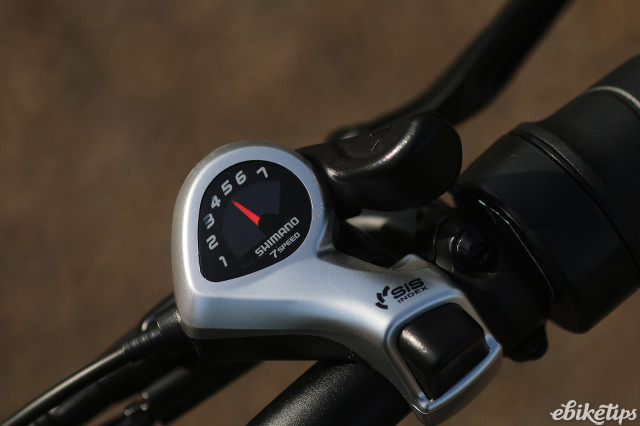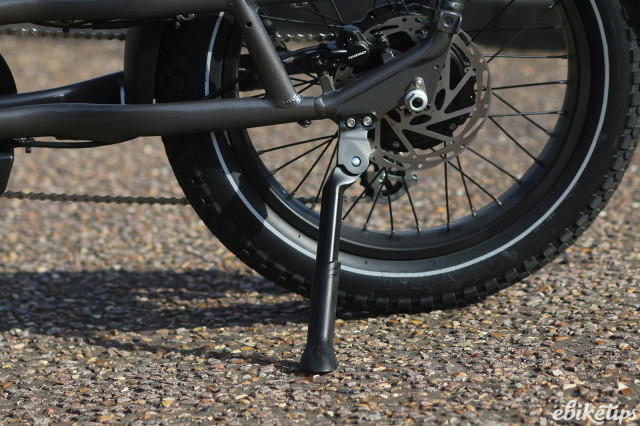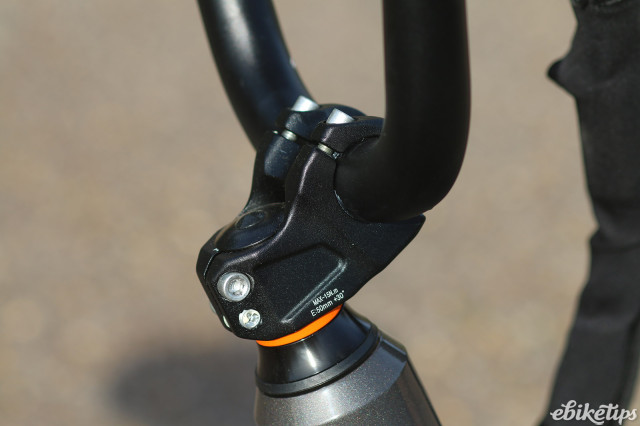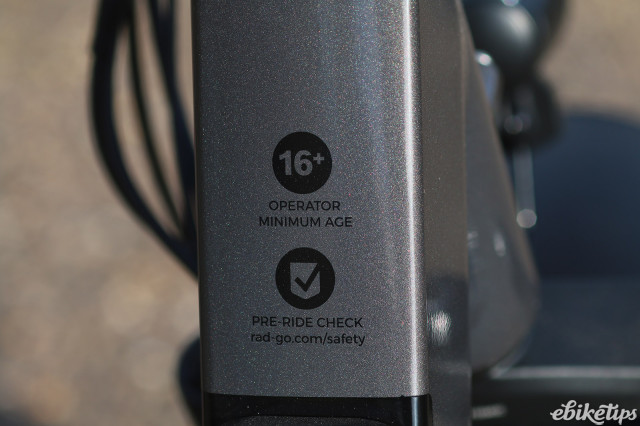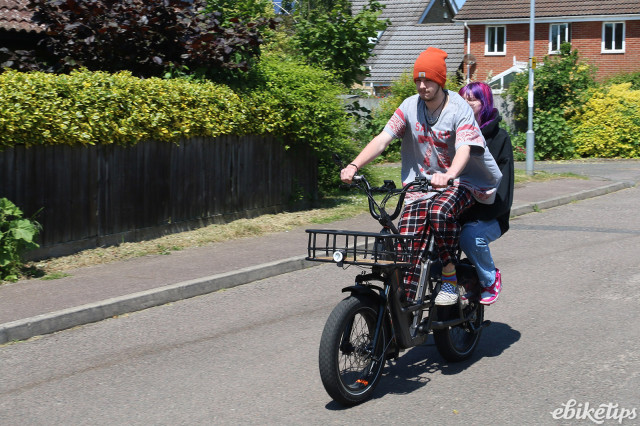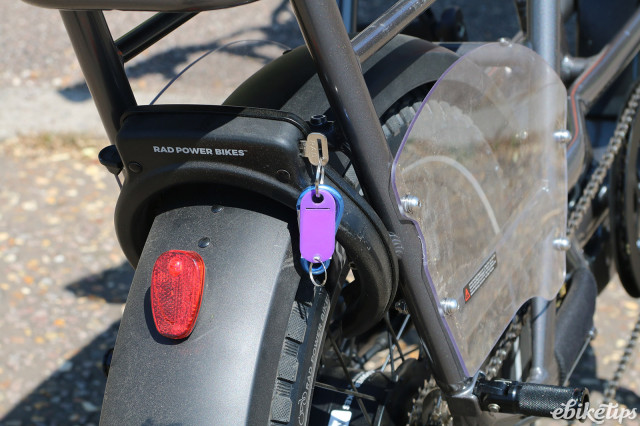Rad Power Bikes RadRunner 3 Plus
Overview
- Improved handling
- Wide gear spread
- Carrying capacity of 159kg (350lb)
- Heavy
- Poor saddle (but better than previous version)
- Maybe too eye-catching
The latest in Rad Power Bikes’ popular RadRunner line of compact utility e-bikes, the RadRunner 3 Plus has a wide range of improvements over previous models, but retains compatibility with Rad’s huge range of accessories. It makes a great round-town runabout, passenger transporter and all-round practical bike, though the price difference over the RadRunner 1 means it’s no longer quite such startlingly good value for money.
Rad Power Bikes’ RadRunner 3 Plus has a beefy aluminium frame and is powered by a 48V geared rear hub motor and a 672Wh battery for a claimed range of 40-72km (25-45 miles). There are five levels of assistance which correspond to even proportions of the available 250 watts of assistance: 50W, 100W, 150W, 200W and 250W.
We reviewed – and loved – the original RadRunner back in 2020 and since then that bike has been our household’s go-to utility e-bike. My partner Caroline’s kids have used it as transport, our lodger has used it to get to work, and since Caroline’s youngest discovered boys a couple of years ago, a succession of pleasant young men have used it to ferry her around. Utility e-bike romance for the win!
The ride
Like its single-speed predecessor, the RadRunner 3 Plus is an absolute hoot to ride as the perky motor whizzes you up to full legal speed in a matter of seconds. The high-rise bars make for a commanding riding position that’s great for city traffic while the numerous changes since the first model make this an altogether friendlier and more sophisticated proposition.
Rad Power Bikes uses the ‘Plus’ designation to indicate a bike with derailleur gears, and that’s a change that makes a big difference to the ride of the RadRunner 3 Plus. Instead of the previous single gear, there’s a seven-speed freewheel with sprockets from 11 to 34 teeth. That gives a top gear that’s high enough you can keep up with the pedals on downhills long after the assistance has cut out, up to about 40km/h (25mph). At the other end, the low gear makes it easy to give the motor a bit of help if you have to climb something steep.
My favourite example of the latter is a tiny hump-backed bridge where a local cycleway goes over a railway line. The slopes either side have about a 20% grade and awkward approaches. Pop down into a low gear and you can get up them easily where the RadRunner 1 struggles.
It weighs around 35kg, and those fat knobbly tyres are not short of rolling resistance, so you still don’t want to ride the RadRunner 3 Plus without assistance, but using the lower assistance levels to get more range out of the battery is a much more practical proposition thanks to the wide gear range. I found a 10% climb quite doable in the lowest assistance level.
The RadRunner 3 Plus’s handling strikes a nice balance between the manoeuvrability any urban bike needs and the steadiness you want in a bike that cruises at 15mph. With those huge tyres, it’s not like dodging potholes is a necessity the way it is on a skinny-tyred bike, so you can relax and concentrate on the traffic or the views rather than having to swerve every little hole.
Rad say they’ve improved the handling over the RadRunner 1 and I have to agree. It’s definitely steadier. Not that version one was flighty, but the 3 Plus is a bit calmer.
I found the riding position of the RadRunner 1 a bit short and that hasn’t changed for the RadRunner 3 Plus. Fortunately, the 50mm stem is easy to swap out for something longer to provide a roomier cockpit. I’m in a minority of one in my household though; everyone else likes the short, easy reach to the bars.
While it’s nice to see that Rad have ditched the silly one-piece saddle and seatpost that were far and away the worst feature of the RadRunner 1, the new saddle is only a partial improvement. It’s quite flat, and wide enough at the nose that it still impedes pedalling. It’s nowhere near as bad as the RadRunner 1 saddle, but given the vast range of saddles a bike manufacturer can choose from, it’d be nice if it looked like it had been chosen for pedalling rather than looking at. Still, at least it’s mounted on a conventional micro-adjust seat post so it’s easy to swap it out.
Range is similar to the RadRunner 1, as you’d expect from the identical battery capacity. Rad claims 40-70km but that lower number is a bit conservative. I still had two (out of 10) bars of battery life left after 40km on full assist, despite being a fat git and having done a few (admittedly minor) hills on the way.
I asked Rad Power Bikes about the hub motor, which now carries Rad branding rather than the previous Bafang marque. While it looks an awful lot like a Bafang unit, Rad told me: “The motor is Rad Proprietary. The speed and power output is controlled by the internal computer to meet compliance and safety standards for Europe.”
Rad say they’ve tweaked the new motor considerably so it works better within European pedal-assist bike rules. It’s well known that you could fairly easily modify previous Rads to gain more speed and power; it sounds like that’s no longer the case. How you feel about that will be determined by your attitude to the rules.
When I asked how much torque the motor produced Rad told me: “We don't attribute a specific number, due to being reductive. … The way we've designed our new motors changes the way the torque is generated. It's not possible to reduce this to a simple fixed number.
“The previous RadRunner motor has a higher top speed focus/range. Basically, the top speed of the windings can go to ~42km/h. The motor has to supply power across that range, whether your bike is limited to 25km/h or not.
“On the new motors, the top speed of the windings is 25-32km/h, so your torque curve is more condensed, and we are able to supply torque at lower speeds. Along with this reduced overall speed, we gain efficiency because the motor is not trying to go to higher speeds, so it tops out. Right now we may not have "more" torque, but we have that torque at lower speeds, which will directly correlate to climbing hills better and will provide a better acceleration on flat terrain.
“We find that the new Runner motor is approximately 25% more efficient in its hill climbing ability than the previous iterations.”
Getting attention
Wherever I parked the RadRunner 3 Plus it got comments. That’s not surprising: it’s unusual enough that even Cambridge folks, accustomed to being surrounded by all sorts of bikes, notice it. I like a bit of attention and a conversation-starter as much as the next bike nerd but I do worry that a bike this distinctive is going to be a serious thief magnet. I used a couple of Abus high-security locks whenever I parked it up, as well as the frame lock.
Unboxing and assembling
The RadRunner 3 Plus comes packed in a very sturdy box with the front wheel and handlebar removed. A pretty comprehensive video covers assembly and Rad supplies a tool kit that includes the basic spanners, hex keys and screwdriver you need to put the bike together. Rad recommends having a friend help you get the bike out of the box and fit the front wheel, and that's good advice. I managed to do it all solo, with a workstand to hold everything steady, but it was a bit of an exercise.
Rad could make the unboxing process easier by having the box open at one end rather than the top, and mounting the bike on a sheet of cardboard that could then be slid out of the box. Alternatively, if you know you’ll never need the box again, you can just hack it open with a Stanley knife.
Putting the bike together I found various threads had been assembled without grease, and while the video linked above tells you to grease the seat post and pedal threads it doesn’t, for example, mention greasing the stem bolts. Folks, you’ve got to grease them bolts. As well as preventing corrosion – vital when you’re screwing a steel bolt into an aluminium thread – grease lubricates the thread so that your torque wrench measures the actual tightening force and not the thread friction.
New features
You can still buy the original RadRunner 1 and it’s just been reduced to only £849, so what do you get if you pay more than twice as much for the RadRunner 3 Plus?
Frame: The RadRunner 3 Plus has a completely new frame that has a much beefier aspect than the old chassis. Significant changes include a housing in the down tube for the battery, a longer head tube, generally straighter lines and extra tubes on the integrated rear rack so you can still use panniers if you have a passenger seat fitted. That right there is a big increase in versatility. In addition, the passenger seat for the RadRunner 3 Plus mounts with a simple dial nut rather than having to be bolted into place, so it’s easy to remove.
Geometry changes: The new frame is longer than the RadRunner 1’s, with longer chainstays so you’re less likely to catch your heels if you fit panniers.
Gears: As previously mentioned, the RadRunner 1 is a single-speed, the RadRunner 3 Plus has a 7-speed freewheel with an 11-34 range that makes life easier when you have to help out the bike on climbs.
Brakes: The original cable-actuated disc brakes have been replaced with hydraulic units. While that’s a good thing for overall reliability, it turns out to make surprisingly little difference to the stopping power on offer.
Suspension fork: Like the RadRunner Plus, the RadRunner 3 Plus gets an RST suspension fork to take the sting out of bumps.
Mudguards are included with the RadRunner 3 Plus so that’s £69 you don’t have to spend to keep your bum dry. That also swerves the chore of fitting them, which on the RadRunner 1 involves dropping out the rear wheel, an awkward job on a hub-motor e-bike.
Saddle: The worst thing about the RadRunner 1 is the silly one-piece saddle and seatpost. Happily, that’s gone, replaced with a Rad-branded big comfy bum saddle.
Carrying capacity: The RadRunner 3 Plus can carry a total of 159kg (350lb), up from the RadRunner 1’s 136kg (300lb).
Pedals: They now have aluminium bodies, a step up from the RadRunner 1’s very basic plastic-bodied pedals.
Display: Rad Power have split the display in two for the RadRunner 3 Plus. On the left, the main controller switches the bike and lights on and off, and sets the level of assistance. It displays the assist level in numbers from 1 to 5, and shows battery charge with a column of 10 LEDs. In the middle of the handlebar, a big, bright display shows speed, distance and time. You can switch the latter two between overall distance or trip distance, and time of day or trip time.
My partner Caroline commented that the RadRunner 1’s controller was confusing because it had two very similar rows of LEDs, one for battery capacity and one for assist level. She also found the buttons poorly labelled and confusing. The 3 Plus’s controller is much, much better, with large, buttons well-marked and easy to reach and a clear difference between assist level and fuel gauge. And you don’t have to add a third-party bike computer if you want to measure time, distance and speed, they’re all on the large, clear central display.
Battery: The previous battery with its behind-the-seat-tube placement is gone, replaced by a slimmer unit that nestles tidily in the down tube. This is easily removed by unlocking with the supplied key. It springs out when released, and pops back into place with a firm clunk. Removing the old battery was a bit fiddly as the frame and saddle got in the way; removing the new one is a doddle. The electrical contacts are at the bottom so current integrity is maintained both by the weight of the battery and the spring at the top. Capacity is the same at 672Wh.
Kickstand: A side-stand by the rear wheel replaces the previous motorcycle-style centre stand. This is a bit swings-and-roundabouts. The old stand was great for keeping the bike rock steady while you loaded panniers or popped a small dog into a front basket, but lifting a laden bike on and off the stand did need some serious oomph. The new sidestand is easier to use and still pretty steady.
Handlebar: The high-rise handlebar is now a bit wider and doesn’t rise as much. It doesn’t need to because the front of the bike itself is taller. I had to get a tape measure out to confirm the width difference, whereas Caroline noticed it immediately and felt it put her in too much of a Jesus Christ pose. I might have to get out the tube-cutter, though there’s really only scope to trim a bit over a centimetre from each end and still leave room for all the controls.
Lights: The front light has cooling fins that the RadRunner 1’s lacked, and looks a bit brighter but Rad doesn’t provide any numbers to confirm that. The single-LED rear light has moved from the rear rack to the mudguard and is a bit smaller; it also acts as a brake light, as did the RadRunner 1’s.
New charger: The original Rad charger had two lights, a red one to show that it’s plugged in to the mains and one that changed from red to green to indicate charging and fully charged. The new charger has just one light and is also a bit heavier, which I always think is a good thing in a charger. The new charger is backwards-compatible with previous Rad models, with the same plug and 2A output.
New lock and accessories: One of the great strengths of Rad bikes is the huge range of accessories on offer: various sizes of baskets and luggage platforms that bolt on to the frame’s many attachment points, a passenger seat for the rear rack, and so on. The vast range of add-ons now includes a Dutch-style lock that’s big enough to go round the RadRunner 3 Plus’s fat tyres. I’m a big fan of the convenience of frame-mounted locks; they’re always there when you need them, even though you’ll want something beefier if you’re parking for a significant time.
Other new, RadRunner 3-specific accessories include a new Passenger Package as the RadRunner 3 Plus lacks the mounting holes that the original passenger seat used, and a new Console – a centre-mounted lockable storage box.
One thing that hasn’t changed is the tyres: they’re still made for Rad by Kenda, with a knobbly tread based on the K-Rad BMX tyre, nominally 3.3 inches wide (I make them 89mm, which is more like 3.5 inches) and have Kenda’s K-Shield puncture resistant casing and reflective stripes on the sidewalls. Our RadRunner 1 has clocked up a couple or three thousand kilometres without a puncture.
Nevertheless, I’d like to see Rad offer lighter tyres as a build option. Their CST Big Boat 3.0-inch tyres have a lighter tread more suitable for road use; I think for many people who never ride on any sort of trail they’d be more suitable than the knobblies. It’s telling that the RadWagon 4 — Rad’s longtail cargo-and-kid transporter – uses 22 x 3.0 tyres with a smoother tread pattern. Those tyres are actually only a couple of centimetres bigger than the RadRunner’s.
Manual handling
The RadRunner 3 Plus comes with a 48-page A4 manual that does a very good job of guiding you through assembling, adjusting and using the bike. This includes a comprehensive listing of torque values so you can get everything properly snugged up, and a timetable of routine maintenance tasks.
However, Rad Power Bikes’ American roots really show in the overwrought safety warnings about, well, everything. Look, I understand why bike makers want to cover their arses and suggest we use helmets but to claim “Riding … without a helmet puts you at VERY HIGH RISK of serious injury or death” is simply utter bollocks. There are 60 other mentions of death in the manual; the word ‘fun’ appears twice, ‘enjoyment’ just once.
This abundance of caution almost certainly comes from Rad’s current legal situation. The company is involved in a lawsuit arising from the death of 12-year-old Molly Steinsapir who was fatally injured when the RadRunner 2 on which she was a passenger with her friend 11-year-old Eme Green crashed while riding down a 14% hill in Los Angeles in January 2021. A sticker on the RadRunner 3 Plus says the bike should not be ridden by people under 16 years old – the UK minimum legal age for e-bike us is of course 14.
Rivals
The Velosta 1 is well worth a look if you’re in the market for an inexpensive practical e-bike and it’s considerably cheaper than the RadRunner 3 Plus. However, the RadRunner 3 Plus has a larger range and Rad offers a wide range of accessories, which isn’t the case with Velosta.
On the spendier end, the Tern Quick Haul P9 costs £3,100, has a Bosch mid-motor that’s arguably more sophisticated than the Rad’s rear hub unit and gets you access to Tern’s accessory range.
If you want something beefier in this price range, take a look at the Rad Power Bikes RadWagon 4 for £1,999, or the £1,899 Mycle Cargo.
Conclusions
The Rad Power Bikes RadRunner 3 Plus is a great practical e-bike that works brilliantly for commuting, shopping, kid-carrying (and even adult-carrying as long as you and passenger total under 159kg). Thanks to its various spec improvements over its predecessors it’s friendlier and more versatile and while those extra features have boosted the price, I think it’s still pretty damn good value for money. Unless you need to carry, say, two kids or cargo-bike quantities of stuff, it’s a bike that can easily fulfil the urban runabout role of the typical family car.
1 comments
For anyone reading this review, please don;t buy a Radpower bike. They have announced they are pulling out of Europe, you may not be able to get the parts you willl need for repair in the future.
